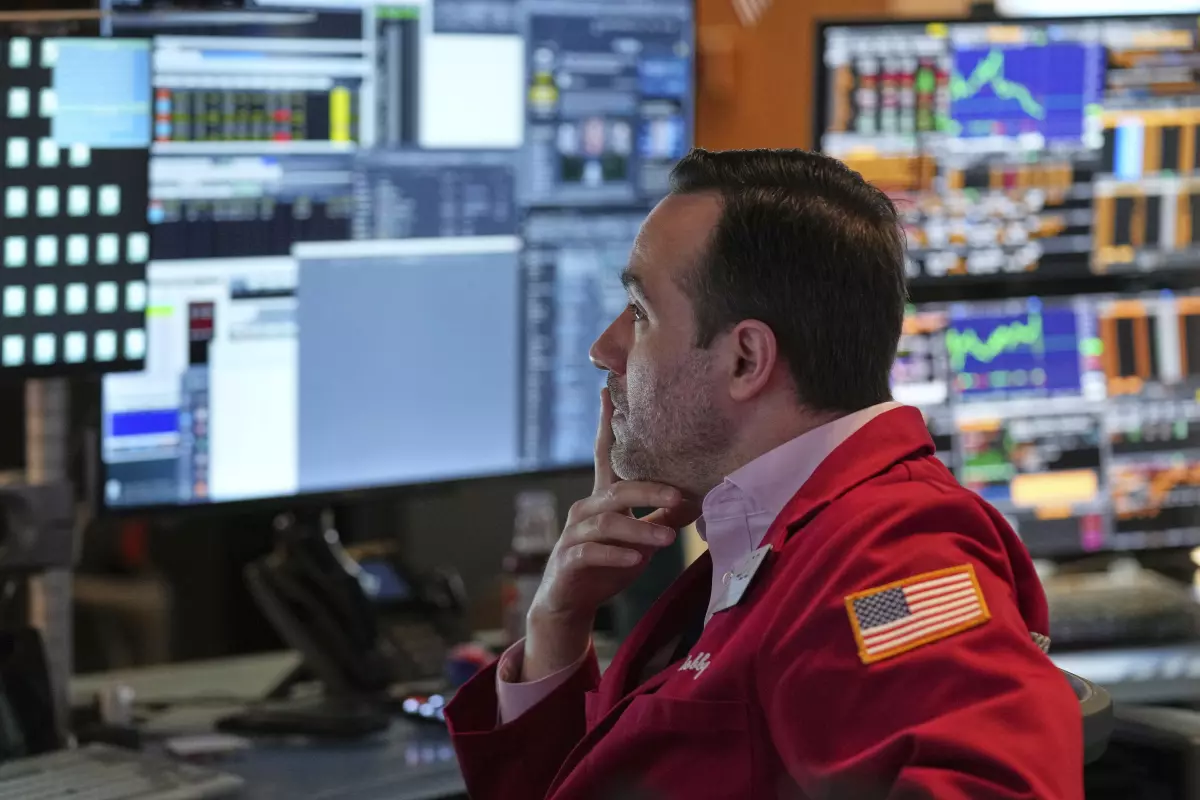The global stock market sell-off intensified dramatically as major indices plunged following China’s retaliatory measures against the tariffs imposed by former U.S. President Donald Trump. The Dow Jones Industrial Average took a severe hit, dropping by 1,000 points in a single trading session, marking one of the worst days for the market in recent history. Other global markets followed suit, with Asian and European indices also seeing significant losses as investors reacted to escalating trade tensions between the world’s two largest economies.
The market’s reaction came swiftly after China announced its countermeasures in response to the latest round of U.S. tariffs on Chinese goods. The Chinese government imposed new tariffs on a wide range of American exports, including agricultural products, automobiles, and technology components. Additionally, China devalued its currency, the yuan, allowing it to drop to its lowest level against the U.S. dollar in years, a move that further exacerbated market fears of an extended trade war.
Investors scrambled to offload stocks as uncertainty gripped the financial world. The sell-off was not confined to Wall Street; major indices in Europe, including the FTSE 100 and the DAX, also tumbled by several percentage points. Asian markets, particularly the Shanghai Composite and the Nikkei, experienced sharp declines, reflecting growing concerns about the impact of the trade dispute on global economic growth.
The Trump administration had long taken a hardline stance against China’s trade practices, arguing that unfair policies, intellectual property theft, and trade imbalances needed to be addressed. The imposition of tariffs was part of the broader strategy to pressure Beijing into making economic concessions. However, China’s latest response signaled that it was willing to fight back aggressively, raising fears of a prolonged conflict with damaging consequences for businesses and consumers worldwide.
One of the most immediate consequences of the escalating trade war was a flight to safety among investors. Gold prices surged as traders sought refuge in safe-haven assets, while bond yields dropped sharply, reflecting a rush toward U.S. Treasury securities. The yield on the 10-year Treasury bond, often seen as an indicator of economic sentiment, fell significantly, highlighting concerns about slowing global growth.
The stock market’s sharp decline also had a pronounced impact on major American corporations. Companies with high exposure to China, such as Apple, Boeing, and Caterpillar, saw their stock prices tumble. The tech sector, in particular, faced heavy losses, as firms that rely on Chinese supply chains and markets for revenue faced renewed uncertainty. Semiconductor companies, which are deeply interconnected with Chinese manufacturing, experienced some of the steepest declines, with stocks like Nvidia, Intel, and Qualcomm seeing double-digit percentage drops.
Retail investors and retirement funds were not spared from the turmoil. The widespread sell-off erased billions in market value, raising fears about the potential for long-term financial damage. Many analysts warned that if tensions between the U.S. and China were not de-escalated soon, markets could face an extended period of volatility, potentially leading to a global recession.
The Federal Reserve also found itself in a challenging position amid the chaos. The central bank had already been under pressure to cut interest rates to mitigate the effects of the trade war on economic growth. The latest stock market turmoil only intensified calls for the Fed to take aggressive action to stabilize markets and support the economy. Some market analysts speculated that an emergency rate cut could be on the table if conditions continued to deteriorate.
President Trump responded to the market turmoil with characteristic defiance, blaming China for the instability and doubling down on his trade policies. In a series of social media posts, he accused China of manipulating its currency and engaging in unfair trade practices. However, critics argued that the administration’s approach to the trade war had backfired, leading to uncertainty and economic strain instead of meaningful concessions from Beijing.
Global financial institutions also weighed in on the crisis. The International Monetary Fund (IMF) issued a statement warning that the escalating trade war could have significant negative consequences for the world economy. The IMF urged both the U.S. and China to return to the negotiating table to avoid a prolonged economic slowdown. Similarly, the World Bank and other financial organizations expressed concern that the trade conflict could undermine years of economic progress and stability.
Corporate executives and business leaders voiced frustration over the growing uncertainty, with many warning that continued trade tensions could force companies to rethink investment strategies, cut jobs, or raise prices for consumers. Farmers, in particular, faced an immediate crisis, as China’s retaliatory tariffs targeted American agricultural exports, including soybeans and pork. With China being one of the largest markets for U.S. agricultural products, many farmers worried that they could face financial ruin if the trade war continued indefinitely.
Despite the turmoil, some market analysts cautioned against panic, suggesting that the sell-off could be a temporary reaction to geopolitical uncertainty. They pointed out that while trade tensions had escalated, negotiations between the U.S. and China could still resume, potentially leading to a resolution. However, others warned that even if a trade deal were eventually reached, the damage inflicted on the global economy could take years to repair.
As investors braced for another volatile trading session, all eyes remained on Washington and Beijing to see whether cooler heads would prevail. The stakes were high, with the possibility of further economic retaliation, additional tariffs, and even more severe financial market disruptions looming on the horizon. For now, the only certainty was that the stock market sell-off had worsened, leaving investors, businesses, and consumers on edge as the trade war continued to unfold.



